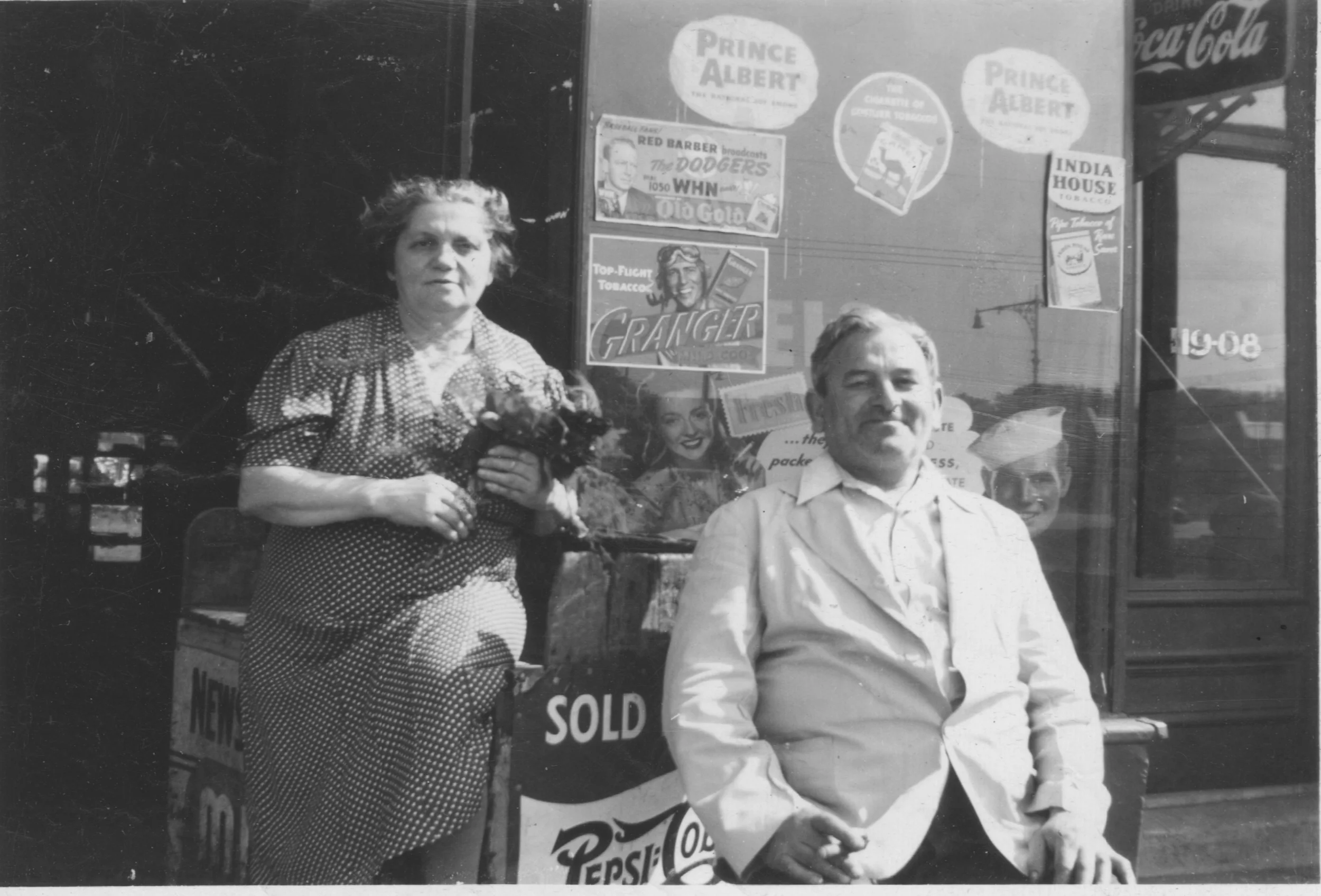Notes on Straight From Bertha, Friedman and Weinbren, 2015
R. Green, 3/2/15
Straight From Bertha is straight from the heart. From the mind, it is hardly straight. The Gertrude Stein epigraph—“Everything being alike everything is different simply different naturally simply different”—prescribes the profoundly recursive style of the film will take, starting, as the film does, with the minimalist, structuralist, looping film-within-a-film, appropriated from an earlier era, 1976, then folding into that film new material from many earlier and later eras, generations, and themes, including film history, film language, film style, film institutions, family history, biography, and autobiography.
Straight From Bertha eventually modulates from a structural/materialist, minimalist film into a documentary somewhat related to the family-history genre pioneered by Amalie Rothschild and her cohort, and later by Ross McElwee, Alan Berliner, and others. The title and central focus of Straight From Bertha suggest that it is intended primarily as a bio-pic, treating several generations of the Gorman family, but celebrating Bertha Gorman, the long-deceased mother, grandmother, great-grandmother, great-great-grandmother, and aunt of the film’s living informants.
Matriarchy and the power of a strong woman do emerge as the multi-jointed backbone for the film. Bertha is the organizing principle for the family history, but Roberta Friedman, the co-director of the film, is heard several times calling the shots and directing the informants’ moves and comments. By far the most engaging informant is Norma Passy, Bertha’s niece. She is self-possessed, wryly funny, and solidly present before the camera, a very appealing but no-nonsense anchor for the family portrait—a kind of living stand-in for the ancestral Bertha.
Norma Passy is raised to this exalted station by the film’s editing, but also by her physical setting in the film, and by the music accenting her interview. The famous aria, “Casta Diva,” from Bellini’s opera Norma, which comes in overpoweringly loud over Norma ’s interview, anoints her too as a diva, a priestess of a powerful order founded by Bertha Gorman. Norma’s physical placement for the interview explicitly in the “ruins” of the recently defunct Millennium Film Workshop in New York City, associates her with other ghosts that inhabit the legendary Workshop and that make up the history of one of the venerable, generative sites of the New American Cinema, an almost holy site with which the makers of this film are long associated, and whose passing they mourn. The film treats the vacated Workshop as equivalent to Bellini’s setting for Norma, or as a New York equivalent of Markopoulos’s and Beavers’s ‘Temenos,” or “sacred place.” There is no doubt about the film’s linking of Norma and the Workshop, and of the association of both with sanctity—piles of dusty reels of 16mm film and an old upright piano formerly owned by Kenneth Anger are discovered as the camera roams among the decrepit remains of an era while workmen are taking the old Workshop apart; the sad, beautiful strains of Bellini’s aria sound at high volume, with the aria’s sub-titles running the lyrics, “ah, come back again, as you were then…” addressing both the matriarch, Bertha, and the portentously named Millennium Film Workshop as generatrices.
This film mourns ancestors and celebrates a family, and at the same time, mourns and celebrates a film institution and its era. This is a wonderful, unusual accomplishment, but the film then deepens the mourning and the celebration to include the entire institution of film itself. Shots of the devastated landscape in Tarkovsky’s Stalker—including a shot of an abandoned, post-apocalyptic film studio—are woven into the shots of the abandoned Millennium Film Workshop. Also, Roberta Friedman, the co-director of the film—and the niece of Norma Passy and the great-niece of Bertha—Roberta specifically requests, on microphone, that Norma Passy say the words, “Bertha was probably born in 1890,” which Norma does repeat. This date suggests, to film-culture initiates, the parallel of the Gorman family matriarchy-- with the history of cinema itself. Indeed, the audio pun on “birth” in Bertha’s name suggests both the birth of the matriarchy traced in the film, but the birth of cinema. That notion is supported throughout the film by the film’s structure, whereby Bertha’s children, the Gormans’s second generation, are presented as a film within the film generatrix, a film made in 1976 by Roberta Friedman and Grahame Weinbren, Weinbren also the other co-director of Bertha. That film-within-the-film establishes that second generation’s figures, but also establishes, through it’s looping, recursive, task-oriented, formulaic style, an era in film history of minimalist and structuralist exploration.
This is a very ambitious project, founded in two different but related kinds of love and commitment, one to family, one to visionary ambition. Those two loves are not necessarily parallel, but they are made parallel in this film to emphasize the feeling of love and community that inheres in a movement, in mutual commitment to a vision, in this case a vision of independent experimental film in its many forms and motives. The problems the film Straight From Bertha faces are suggested by the difficulty that might accompany the reading and comprehending of the preceding paragraph, just above, of these notes; the relative illegibility of the paragraph can be improved on, but it also partly reflects the impacted density of the recursion in the film. Even more dangerous for the film’s reception is the difficulty in holding the attention of the viewer through the first half of the film, until the ancient and contemporary Normas arrive; the Normas constitute a figure that we can truly relate to and who can help bind us to the feelings about the living history and continuing potential—and the grievous fragility—of independent, socio-personal cinema that the Workshop represents. Straight From Bertha’s opening film-within-the-film from 1976, which is necessary for the structure and meaning of the larger project, is also a very “straight gate and narrow way.”
These notes are dedicated to Howard Guttenplan.



